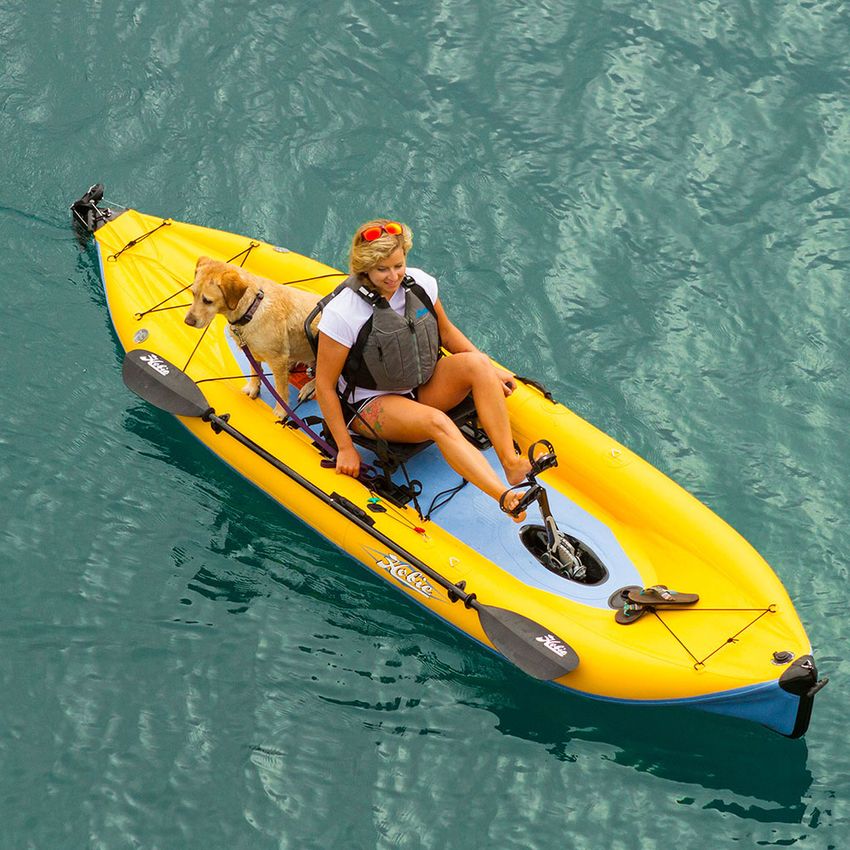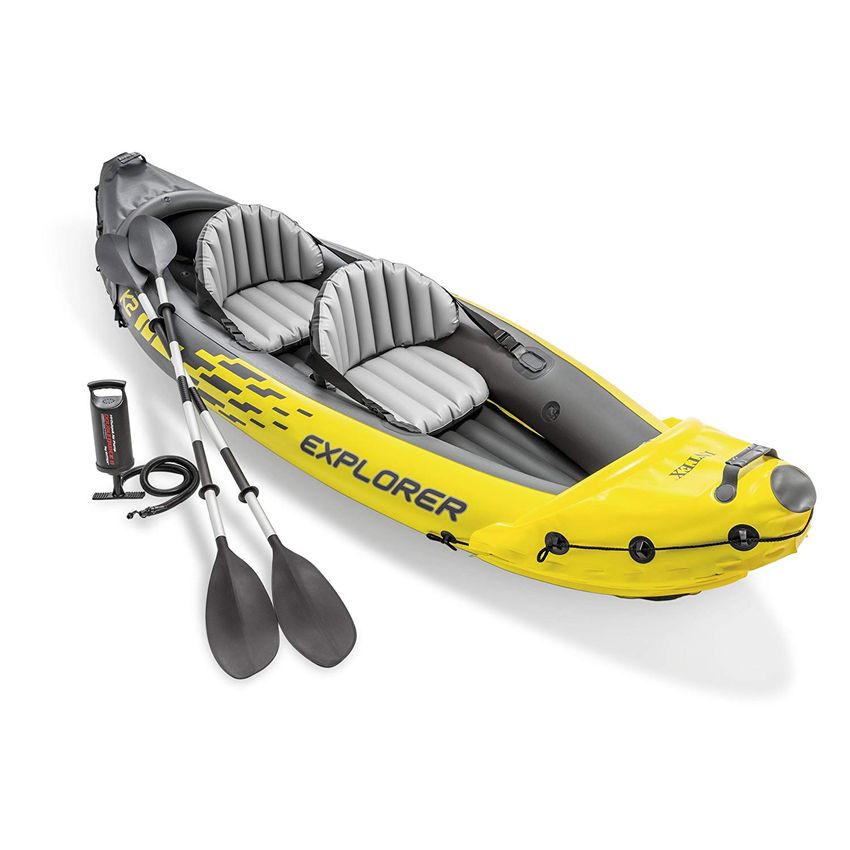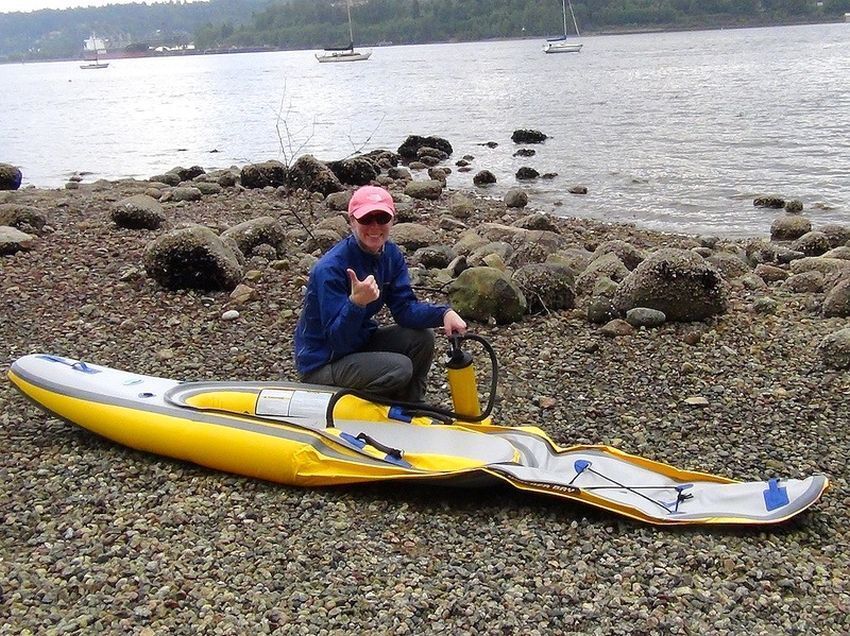You can broadly classify kayaks into two categories. One is a hard shell, and the other is inflatable. Hard shell kayak is obviously the traditional variant. It is much heavier, and you have to carry the whole thing around. An inflatable kayak can be packed in a bag, stacked up in the boot of your car and you can practically carry it all by yourself.
You don’t even need a trolley or another pair of hands. Of course, you need to spend some time inflating and deflating an inflatable boat. Depending on the size and the type of pump you have, inflating can take up to ten minutes. Deflating takes much less time.

source:sunshinekelly.com
Inflatable kayaks can be made of polyvinyl chloride, nitrylon or hypalon. It is not unusual for manufacturers to use a combination of these three materials. Hypalon is the most reliable of the three and it is a form of neoprene while nitrylon is rubberized fabric. An inflatable boat may also have polyurethane coated cloth.
You must find out about the specific materials used as you study various reviews and a good place to start is OSHAUN. PVC has its share of pros and cons, so do nitrylon and hypalon. The best inflatable kayak is one that is safe on the waters and resistant to all kinds of external threats, including wind and ultraviolet radiation of the sun, exposure to chemicals and other substances. Those made of hypalon usually costs more because it can last much longer than other materials.

source:amazon.com
Inflatable kayaks require a pump. It could be a hand, foot or electric one. The most common reasons for people choosing these are size and weight. There is no standard size for such models and they come in a vast range of styles, dimensions and colors. They are significantly lighter than hard shell kayaks. If you get a relatively smaller and sleeker kayak, even a child aged eight or above can carry it around. While inflatable ones are lighter and easy to work with, they are by no means weaker or less durable. These can last years if you use them properly and take good care. They can easily withstand bumps and knocks. They can bounce off hard surfaces and rocks. They can survive collisions.

source:quicktoptens.com
Inflatable kayaks are suitable for all kinds of expeditions. You can explore a calm and serene course or you can go fishing. There are fishing kayaks which have convenient features for anglers. You can paddle along a coastline, and you can also indulge in a bit of rafting. However, it is best to avoid courses that are categorized as class four or five. To learn even more about inflatable kayaks visit Kayakguidance because they are the real specialist resource of this sport.
These waters are the roughest. The material your inflatable kayak is made of will survive in these rough waters, but the light weight will make it difficult for you to maneuver it in such strong currents. This does not mean inflatable kayaks are not stable as there are designs that have broader bases than hard shell models. These are more stable and easily maneuverable than hard shell variants.





